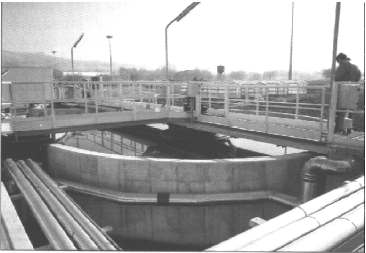Consent Compliance Case Study Summary
TOC Analyzer to monitor effluent discharge for COD, D Leblanc
Summary:

Effluent Control at a Fruit Juice Manufacturing Plant in Germany, S Patsch
Abstract:
Waldnieler Fruchsaft GmbH was able, due to the high automation of the plant, to ensure that the discharge values always meet the given official standards. Due to the application of the Isoc-Stip COD analyzers the analyzing time and with it the batch time of a cleaning cycle were reduced significantly. This has created additional capacity. In the past a sampler of the cleaned waste water had to be extracted and checked manually in the laboratory after each cleaning cycle. Now this test is completely automated. Also, storage of the data and initiation of further steps is an automated process. The plant operates largely independently from the operating personnel. Only the "Spill Tank" has to be filled manually which is done by switching the pump. And this only has to be done during operational tests.
 Download the full article here
Download the full article here
Proven experience with on-line COD measurement within the chemical industry; Dr C Genner
Summary:
The use of holding tanks to prevent COD discharges outside of consent levels at a chemical factory is described. On-line COD measurement with a measurement result in minutes is used to optimize the use of the divert tank and ensures a more consistent organic load to the local receiving municipal treatment plant. At another chemical manufacturing site on-line COD measurement has been used to relate peaks to events occurring within the factory. In addition the COD data has negated the need for tankering off site material since discharge to sewer is possible without exceeding the discharge license. Major revenue savings have resulted, around £16,000 per year, whilst also providing greater confidence that the limits imposed are not exceeded.
 Download the full article here
Download the full article here
On-line monitoring of BOD, COD and Toxic Flows - the needs for the paper industry Dr C Genner
Abstract:
 Download the full article here
Download the full article here
On-line BOD a paper companies experience, J Pickering
Summary:
A three stage on-line BOD consent was agreed between the company and the EA using an online monitor. If the BOD goes above either one of the first two thresholds certain action by the company is required. If the third threshold is exceeded the EA must be informed. The company has the facility to recycle effluent totally in the face of such an event and can continue to do so until the BOD returns to normal values.
 Click to request the case study
Click to request the case study
The Monitoring of Waste Water drainage from the sewer pipe network of a chemical plant to a River - an Industry's experience with the integration of Laboratory analyzers and continuous on-line
Summary:
A Complex system was created utilizing automatic computerized control of factory waste water and the entire water network.
This enables, together with manual control, constant 24 hour monitoring and confidence that if a spillage, accident etc. occured that the final quality of the waste water was maintained.
A combination of various on-line instruments control and identify numerous parameters (flow rate, pH, temperature, conductivity, Redox potential, TOC, NH4, NO2, NO3, Color, BTX-VOC) which are used to allow a divert to an available emergency storage tank if values exceed acceptable limits.
 Click to request the case study
Click to request the case study
On-line prevention of water contamination in a chemical manufacturing plant -
P Aldrovand, A Formenti - Ciba Geigy
Summary:
For the detection of water contamination in chemical industry processing and prevention of environmental contamination's, it is necessary to ensure that adequate prevention measures are in place for the identification of and reaction to possible spillage.
Education of production personnel on environmental issues, while extremely important, cannot guarantee that accidental spillage of pollutants, which can compromise the plant efficiency, will be eliminated. Similarly, careful management of the biological process in itself may not necessarily achieve the quality of effluent required for legal compliance.
Two kinds of risks have been identified, both strictly related; accidental leakage upstream of the plant and non conforming effluent.
It can be assumed that the use of on-line equipment for effluent monitoring, integrated with an automatic means of diversion will achieve a high level of prevention by storing polluted water and eventually mixing it with low load process waters.
This approach would translate into a significant investment in instrumentation, construction and/or modification of containment structures.
Nevertheless, in this case economic return and corporate image have been viewed to be of greater value than the expense, particularly considering the position of the chemical industry with regard to its environmental impact as perceived by the regulatory authorities and community alike.
